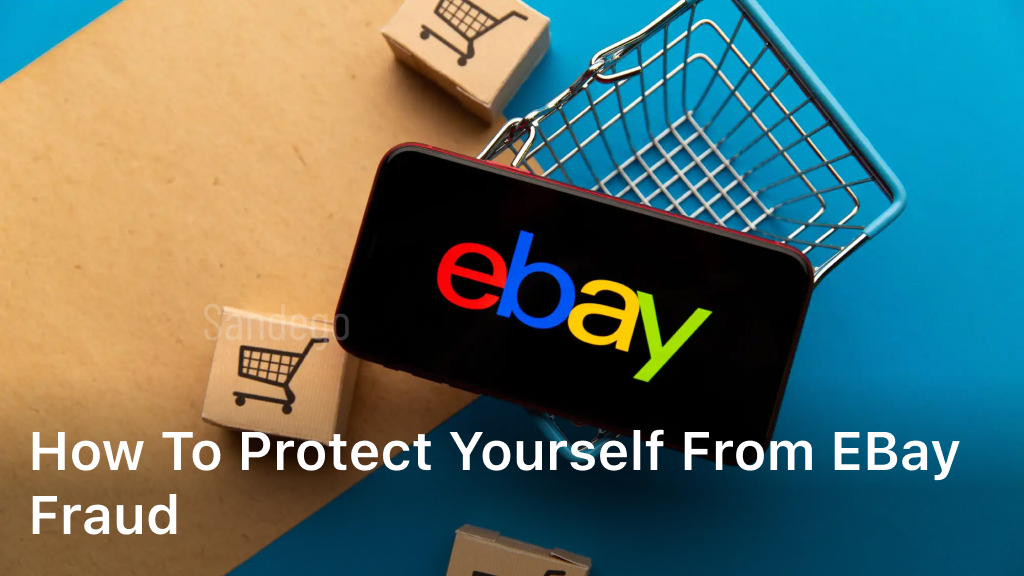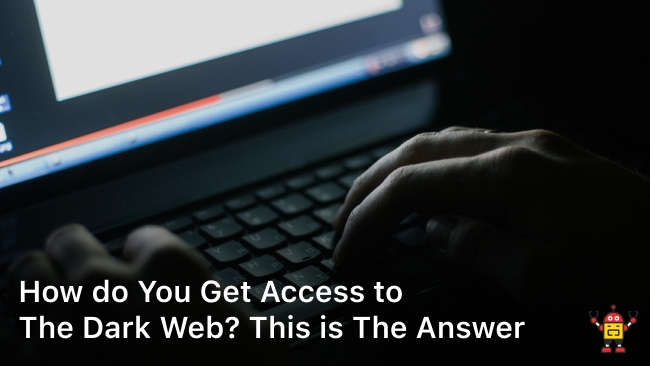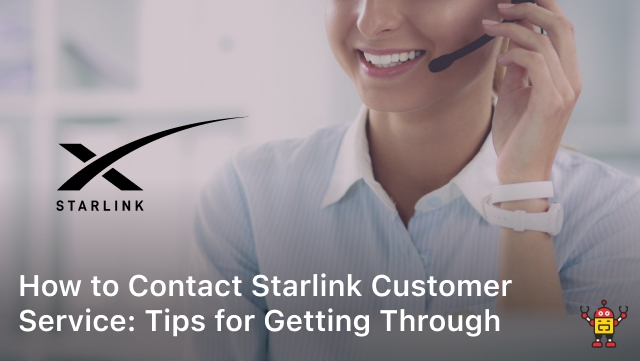Welcome to our guide on how to protect yourself from eBay fraud. As online shopping continues to grow in popularity, it’s important to stay vigilant and take necessary precautions to ensure a safe and secure experience on eBay. In this article, we will provide you with essential eBay fraud prevention tips that will help safeguard your transactions and protect your personal information.
With the rise of online scams and fraud, it’s essential to educate yourself on the tactics used by fraudsters and understand how to recognize and avoid potential threats. By following these tips, you can confidently navigate the eBay platform and enjoy secure online shopping.

Understanding eBay Fraud and Scams
When shopping on eBay, it’s crucial to stay safe from scams and fraud. By familiarizing yourself with the various tactics used by fraudsters, you can take the necessary steps to protect your eBay account and avoid falling victim to fraudulent activities.
Here are some key points to help you navigate the world of eBay scams:
- Be wary of deals that seem too good to be true. Scammers may lure unsuspecting buyers with incredibly low prices or exclusive offers. Remember, if it sounds too good to be true, it probably is.
- Always check a seller’s feedback and ratings before making a purchase. This will give you insights into their reputation and whether other buyers have had positive experiences with them. Look for sellers with a high rating and positive reviews.
- Pay attention to the seller’s location. If they claim to be selling an item from a different country at an unusually low price, it could be a red flag. International transactions can carry a higher risk of fraud, so be cautious when dealing with sellers from abroad.
- Use secure payment methods. PayPal is a trusted and widely accepted payment option on eBay. It offers buyer protection, which can help you recover your funds if you encounter any issues with your purchase.
- Never share your personal or financial information outside of eBay’s secure platform. Scammers may try to contact you directly and request sensitive details such as your credit card information. Always communicate and transact within eBay’s messaging system.
- Read item descriptions and terms carefully. Pay attention to details such as shipping costs, return policies, and any additional fees. If something seems unclear or suspicious, don’t hesitate to ask the seller for clarification.
By following these tips and staying vigilant, you can protect yourself and your eBay account from potential scams and fraud. Remember, it’s always better to be cautious and do your due diligence before making any online purchases.
Safeguarding Your eBay Account
When it comes to online security, protecting your eBay account from unauthorized access and fraudulent activities is of utmost importance. By following these tips and implementing best practices, you can enhance your online security while using eBay and safeguard against potential fraud.
1. Create a Strong and Unique Password
Ensure that your eBay account password is strong and unique. Avoid using common passwords or easily guessable combinations. Include a mix of upper and lower case letters, numbers, and special characters to make your password more secure.
2. Enable Two-Factor Authentication
Activate eBay’s two-factor authentication feature to add an extra layer of security to your account. This will require you to provide a verification code in addition to your password when logging in.
3. Be Cautious of Suspicious Emails and Phishing Attempts
Exercise caution when receiving emails claiming to be from eBay. Be vigilant about phishing attempts and never click on suspicious links or provide personal information in response to unsolicited emails.
4. Regularly Update Your Software and Antivirus Programs
Keep your computer and mobile devices up to date with the latest software and security patches. Install reputable antivirus software and update it regularly to protect against malware and other online threats.
5. Verify Seller Reputation and Product Listings
Before making a purchase, review the seller’s reputation and feedback on eBay. Check if the product listings are accurate and detailed. Be wary of unusually low prices or unrealistic deals, as they may indicate fraudulent activity.
6. Use Secure Payment Methods
Prefer secure payment methods, such as PayPal, when making transactions on eBay. Avoid sharing sensitive payment information directly with sellers and utilize eBay’s buyer protection programs for added security.
7. Regularly Monitor Your Account Activity
Regularly review your eBay account activity for any unauthorized transactions or suspicious changes. Report any discrepancies to eBay’s customer support immediately to rectify the issue.
By implementing these tips and best practices, you can enhance your online security and safeguard your eBay account from potential fraud. Stay informed and take proactive measures to protect yourself while enjoying a safe and secure shopping experience on eBay.
Recognizing and Avoiding Fake Listings
When shopping on eBay, it’s crucial to be able to spot fake listings and avoid falling victim to scams. Fraudulent sellers can be crafty, but with the right knowledge and vigilance, you can protect yourself from becoming a victim. In this section, we will discuss effective strategies for identifying fake or fraudulent listings on eBay, enabling you to make safe and informed buying decisions.
1. Read the Listing Description Carefully
One of the first steps in identifying a fake listing is to thoroughly read the item description. Pay close attention to the details provided, including the product’s condition, specifications, and any unusual terms or conditions. If the listing seems vague or contains grammatical errors, it could be a red flag indicating a fraudulent seller.
2. Check the Seller’s Feedback and Ratings
Before making a purchase, always review the seller’s feedback and ratings. Look for positive reviews and high seller ratings, as these indicate a reputable and trustworthy seller. Be cautious if the seller has low ratings or negative feedback, as it could be indicative of previous fraudulent activities.
3. Research the Seller’s History
Take the time to research the seller’s history on eBay. Look for any previous complaints or reports of fraud associated with their account. If you come across any suspicious information, it’s best to avoid purchasing from that seller altogether.
4. Compare Prices and Photos
Compare the prices of similar items listed on eBay to ensure the seller’s pricing is reasonable. If the price seems too good to be true, it may indicate a scam. Additionally, scrutinize the photos provided in the listing. If they appear generic or stock-like, it’s possible that the seller is using stolen images to deceive buyers.
5. Communicate with the Seller
If you have any doubts about a listing or the seller, reach out and communicate directly. Ask questions about the item, its condition, or delivery options. A legitimate seller will be responsive and provide satisfactory answers. If the seller avoids or deflects your questions, consider it a warning sign and proceed with caution.
6. Utilize eBay’s Buyer Protection Program
Another crucial step in avoiding scams on eBay is to take advantage of eBay’s Buyer Protection Program. This program provides safeguards for buyers, ensuring you receive the item as described or receive a refund. Familiarize yourself with the program’s guidelines and process, and always report any suspected fraudulent activities to eBay.
By following these tips, you can confidently shop on eBay while minimizing the risk of falling for fake listings or dealing with fraudulent sellers. Remember, trust your instincts and remain vigilant throughout your transactions to protect yourself and have a safe online shopping experience on eBay.
Safe Buying and Selling Practices
When it comes to buying and selling on eBay, it’s crucial to prioritize your online safety and protect your transactions. By following a few simple practices, you can ensure a secure and trustworthy experience on the platform.
Secure Online Buying on eBay
- Verify the seller’s reputation: Before making a purchase, take the time to review the seller’s feedback score and read customer reviews. This will help you gauge their reliability and trustworthiness.
- Use secure payment methods: Opt for secure payment options such as PayPal or eBay’s managed payments. These methods offer protection in case of any issues with your transaction.
- Review the item description thoroughly: Carefully read the item description, including details about the condition and any potential defects. If something seems suspicious, it’s best to avoid the purchase.
- Monitor the seller’s return policy: Ensure that the seller offers a clear and fair return policy. This will provide you with an extra layer of protection in case the item doesn’t meet your expectations.
Safe Selling on eBay
- Set realistic prices: Avoid setting excessively high or low prices for your items, as it may attract fraudulent buyers or discourage genuine buyers.
- Protect your personal information: Be cautious about sharing personal details with potential buyers. Only provide necessary information, such as shipping address, and avoid sharing sensitive data.
- Ship with tracking and insurance: Always opt for tracked shipping methods and consider adding insurance to protect yourself against lost or damaged packages.
- Stay vigilant against scams: Be aware of common scams targeting sellers, such as fake payment confirmations or requests to ship to different addresses. If something seems suspicious, reach out to eBay for assistance.
Remember, following these safe buying and selling practices can significantly reduce the risk of fraud and ensure a secure online transaction experience on eBay. By being cautious and proactive, you can confidently engage in transactions while protecting your eBay transactions.
Resolving Disputes and Reporting eBay Fraud
Resolving disputes with buyers or sellers and reporting instances of fraud are essential steps to protect yourself and maintain trust on eBay. If you encounter any issues with a transaction or suspect fraudulent activity, follow these steps to resolve disputes and report eBay fraud:
- Communicate with the other party: Reach out to the buyer or seller involved in the dispute and try to resolve the issue directly. Clear communication can often help address misunderstandings and reach a mutually beneficial solution.
- Review eBay’s resolution center: If direct communication fails or the issue remains unresolved, visit eBay’s resolution center. This platform provides guidance and tools to assist with disputes, including options for requesting a refund or return.
- Open a case with eBay: If the resolution center does not offer a satisfactory solution, you can open a case with eBay’s customer support. This step involves providing relevant details about the dispute and any supporting evidence you may have.
- Utilize eBay’s Money Back Guarantee: If the transaction falls within eBay’s Money Back Guarantee policy, you may be eligible for a refund. eBay will review the case and provide a resolution based on their policies and the specific circumstances.
- Report eBay fraud: If you come across fraudulent activity on eBay, it is crucial to report it. Use eBay’s reporting mechanisms to flag suspicious listings, suspicious user behavior, or potential scams. By reporting fraud, you help protect other eBay users from falling victim to similar schemes.
Remember to maintain all relevant communication records, transaction details, and evidence of fraudulent activity to support your case during the dispute resolution process. eBay’s customer support is available to provide further guidance and assistance throughout the resolution process.
Conclusion
Protecting yourself from eBay fraud is essential for a safe and secure online shopping experience. By implementing the following eBay scam prevention techniques, you can greatly reduce the risk of falling victim to scams and fraudulent activities.
1. Be vigilant and stay informed
Stay updated about the latest eBay scams and fraud tactics by regularly checking eBay’s safety guidelines and staying informed through reputable online sources. Awareness is key to avoiding potential scams and protecting your personal information.
2. Verify sellers and listings
Before making a purchase on eBay, always verify the seller’s credibility. Check their ratings, reviews, and transaction history. Additionally, carefully examine product descriptions, photos, and pricing. If something seems too good to be true, it probably is.
3. Use secure payment methods
When making transactions on eBay, opt for secure payment methods such as PayPal or credit cards. These methods provide buyer protection and allow you to dispute unauthorized charges or fraudulent activities.
4. Keep personal information secure
Avoid sharing sensitive personal information, such as your social security number or passwords, with anyone on eBay. Legitimate sellers or eBay representatives will never ask for such information. Be cautious of phishing emails or messages requesting your login credentials.
By following these eBay scam prevention techniques, you can confidently navigate the online marketplace and protect yourself from fraudulent activities. Remember, your safety and security should always be a top priority.
FAQ
How can I protect myself from eBay fraud?
To protect yourself from eBay fraud, follow these tips:
– Be cautious of deals that seem too good to be true.
– Verify the seller’s reputation and read feedback from previous buyers.
– Use secure payment methods like PayPal that offer buyer protection.
– Pay attention to the item description and photos for any discrepancies.
– Communicate with the seller to clarify any doubts or concerns.
– Avoid sharing personal information outside of eBay’s secure messaging system.
– Report suspicious activity or fraudulent listings to eBay.
– Keep your eBay account password strong and secure.
– Regularly review your account activity and transactions.
What are some eBay fraud prevention tips?
Here are some eBay fraud prevention tips:
– Always check the seller’s reputation and feedback ratings before making a purchase.
– Carefully read the item description and examine photos to ensure they match.
– Use eBay’s Buyer Protection program for eligible items and transactions.
– Be cautious with wire transfers, cashier’s checks, or money orders as payment methods.
– Avoid clicking on suspicious links or opening attachments in emails or messages.
– Enable two-factor authentication for added security on your eBay account.
– Keep your computer’s antivirus and firewall software up to date.
– Be wary of sellers who request payment outside of eBay’s platform.
– Trust your instincts and if something feels off, consider canceling the transaction.
How can I secure my online shopping on eBay?
To secure your online shopping on eBay, follow these steps:
– Create a unique and strong password for your eBay account.
– Enable eBay’s security features like two-factor authentication and alerts.
– Keep your computer’s operating system and antivirus software updated.
– Be cautious of phishing emails or messages claiming to be from eBay.
– Only share personal information through eBay’s secure messaging system.
– Avoid using public Wi-Fi networks when making purchases on eBay.
– Regularly review your account activity and report any suspicious transactions.
– Use secure payment methods like PayPal that offer buyer protection.
– Read and understand eBay’s policies and guidelines to be an informed buyer or seller.






